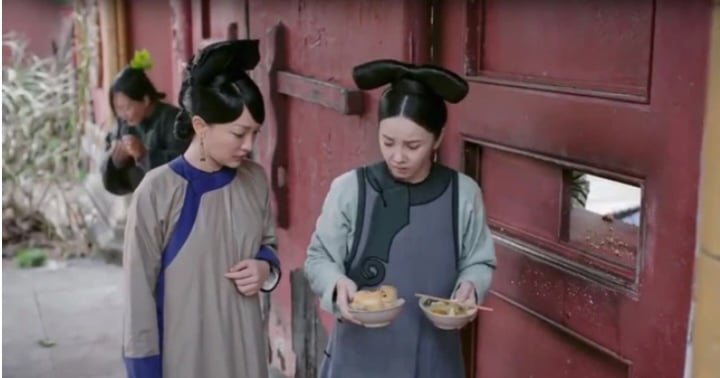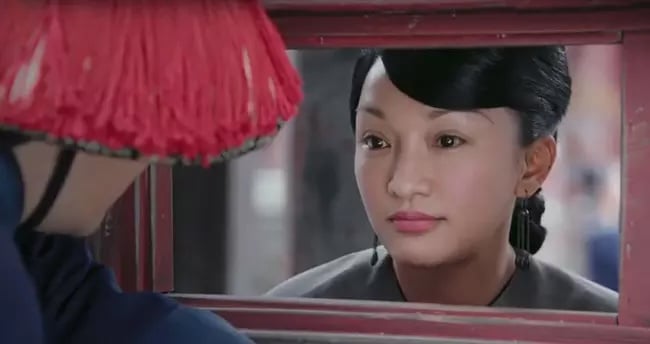The fate of concubines in historical dramas is often precarious. Gaining the emperor’s favor is a rare feat, and those who do must constantly navigate a web of intrigue and rivalry. Envy and treachery lurk in every corner of the palace, ready to ensnare the unwary.
Banishment to the cold palace is a common plot device, signifying a tragic turn of events. Life there is portrayed as a living hell, rife with suffering and misery. Anxiety and pressure plague the exiles, turning their days into a never-ending cycle of torment and fear of losing their freedom and status.
The cold palace is not merely a place of isolation; it is a realm of terror. Concubines exiled there face the constant threat of violence, hunger, and even death. The emperor’s wrath hangs over them like a sword, ready to strike at any moment. The cold palace is a place of darkness, both physically and metaphorically, where sunlight rarely penetrates and hope fades away.

What makes this cold and bleak place so feared?
However, not all concubines who fell out of favor were sent to the cold palace. Those with influential family backgrounds and connections to high-ranking officials often received leniency from the emperor, escaping the harshest punishments. On the other hand, those without power or protection faced a grim fate, sometimes even death, if they committed serious offenses.
Life in the cold palace was barely better than death. In the Ming and Qing dynasties, the term “cold palace” was rarely mentioned, and it did not refer to a specific location. Emperor Pu Yi, in his later years, clarified that no such place existed. Instead, it was a general term for the living quarters of concubines who had fallen out of favor, often located in the darkest and most remote corners of the palace complex.

In reality, life in the cold palace was barely more bearable than death
The cold palace was a place of deprivation and cruelty, lacking adequate clothing and food. It was a slow and insidious form of torture, eroding the exiles’ physical and mental health. Many concubines endured extreme confinement, torture, and even death. Their valuable possessions were often plundered by eunuchs, leaving them powerless to resist.
In this bleak world, their voices were silenced, and their rights were non-existent. The cold palace was a place of unimaginable suffering, a tragedy that few could comprehend. Most concubines had no choice but to endure the humiliation and pain, their spirits slowly broken by the relentless cruelty. Some, unable to bear the shame, chose death as an escape, while others succumbed to madness and illness, their bodies wasting away in the cold and darkness.

In this dark world, their voices and rights were rendered meaningless.
The fate of these women exiled to the cold palace was indeed a tragic one, filled with humiliation, suffering, and an almost inevitable unhappy ending.
Unveiling the Enigma: The Mystical Vietnamese Monarch and His Ferry Bride
Emperor Thanh Thai was not only renowned for his patriotism and unwavering dedication to the anti-French resistance, but he also left a legacy of intriguing tales from his imperial harem. The tales originated from his rather lenient and permissive approach to selecting his concubines, according to historical anecdotes.
The Forbidden Desires of the Palace Maidens: A Tale of Unspoken Longing and Solace
Within the confines of the forbidden city, there existed a group of women whose youth was forever entrapped. These ladies, known as the ‘forbidden ones’, led a life of secrecy and solitude. Their days were spent in a world hidden from the prying eyes of the outside, a world where they were but shadows. But what of their desires? What of their wants and needs, trapped as they were, behind those palace walls? How did they find solace and satisfaction within themselves?
The Village of Vietnam’s Most Beautiful Women: Descendants of Ancient Concubines, as Lovely as a Painting
When it comes to breathtaking beauty, the discerning connoisseur will immediately think of Nha Man village, renowned for having the most beautiful women in all of Vietnam. These women proudly trace their lineage back to the courtesans and concubines of yesteryear, a heritage that shines through in their exquisite appearances.
The Empress of China’s Secret: Why Did Consorts Need an Escort After the Emperor’s Summons?
The Qing Dynasty established guidelines for the emperor to maintain harmony within the harem. These guidelines stipulated that the emperor should distribute his favors evenly and treat all concubines equitably. This practice of rotating concubines and ensuring equal treatment was implemented to prevent conflicts and foster a peaceful environment within the imperial harem.



































